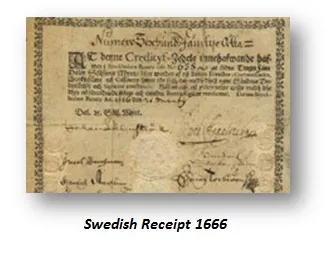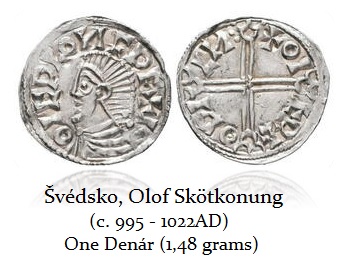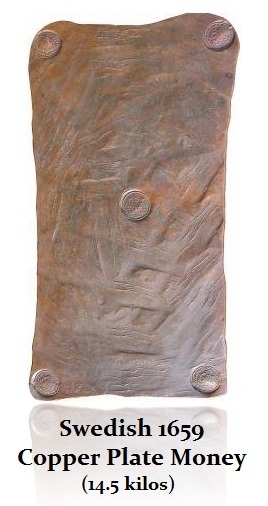Monetary History of
Sweden
Eric the Victorious (c. 945 – c. 995) was a Swedish monarch who is recognized as the first real king of Sweden. There were earlier Swedish kings, but Eric was the first Swedish king who established a line of succession. Eric became known as the Victorious after defeating an invasion force from the south in the Battle of Fýrisvellir. Ancient Roman coins have previously been discovered in Sweden as they have been in India and Asia.
Olof Skötkonung, (c. 995–1022), the son of Eric the Victorious, became King of Sweden. It was during his reign that we find the earliest coinage of Sweden. This took the form of the standard European denomination of the Denar at that point in history. The denar was a silver coin weighing about 1.5 grams struck in silver.
Olof Skötkonung (995-1022)
Anund Jacob (1022-1050)
 However, Sweden holds the record for the oldest central bank that was formed after the fall of Rome – the Swedish Riksbank. That is where modern central banking began. The first true banknotes for circulation appeared in Sweden, and these were actually used by the government to support its wars with Germany. In 1661, the government established a 30-year monopoly for its Stockholm Banco to issue these banknotes known as “letters of credit” that were to be payable in Swedish copper plate money that was extremely heavy weighing almost 15 kilos.
However, Sweden holds the record for the oldest central bank that was formed after the fall of Rome – the Swedish Riksbank. That is where modern central banking began. The first true banknotes for circulation appeared in Sweden, and these were actually used by the government to support its wars with Germany. In 1661, the government established a 30-year monopoly for its Stockholm Banco to issue these banknotes known as “letters of credit” that were to be payable in Swedish copper plate money that was extremely heavy weighing almost 15 kilos.
It was not very practical for actual circulation. However, this practice was abused, and ended up supporting the king. This led to the first banking panic in 1663 when there were more obligations than money to now redeem the notes. The bank was forced to close in 1664.







